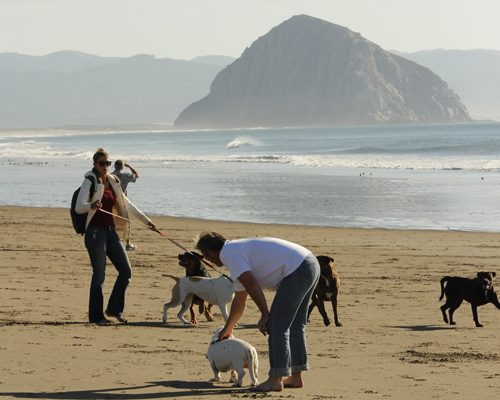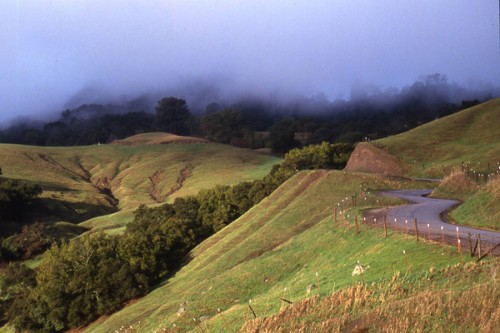Dog-Friendly Vacations That Will Make You Feel Like an Excellent Person
Earth Day might have you thinking how you can make a difference. While it’s always good to fit being green into your daily routine, have you ever considered a green vacation? Most people look at vacations as a way to escape their day-to-day and indulge, but what if there was a way to relax and give back all at the same time?

“Stewardship Travel offers visitors a lighter touch than a high intensity volunteer vacation,” explains Stewardship Travel Director and Diane Strachan. “For instance, WineCoastCountry’s Stewardship Travelers can pair a luxury spa visit with a brief dog friendly beach clean-up, followed by wine tasting from a Stewardship Traveler vintner that invites dogs, fine dining (without your dog) and a donation to the Pacific Wildlife Care Foundation.”
This mix means you can pamper yourself, your dog, and mother Earth at the same time – what could be better?

Each offers activities where dogs are invited to join their owner in demonstrating their philanthropic side:
Avila Beach and Valley – Stewardship Traveler dogs (especially retrievers!) and their owners can visit Avila Beach and pick up a Stewardship Beach Cleanup Kit at participating lodging properties to look for flotsam, jetsam, and plastic litter harmful to wildlife (best to explore the beach after storms). Avila has a special dog run beach north of town. Dogs are also welcome on the public beach before 10 a.m. and after 5 p.m.
Cayucos – Stewardship Traveler Dogs may accompany Stewardship Traveler owners on the dog friendly beach in Cayucos and help pick up the poop left behind my not so caring dog owners. Often times good intentioned people forget their green bagged dog poop on the beach. Poop bags are to be found at almost every beach access point in Cayucos.
Lopez Lake Recreation Area – Leashed pooches can join their guardians at one of the top choices for camping and leisure trips featuring 22 miles of shoreline, there’s something for everyone: camping, fishing, boating, skiing, sailing, windsurfing, picnicking, hiking, equestrian trails, mountain biking, canoeing, bird watching, hanging out with your dog, and so much more. Dogs cannot swim in the lake but can take the natural history boat cruise.
Pismo State Beach – From late October to February, leashed dogs and their guardians can marvel as thousands of black and gold Monarch butterflies cluster in the limbs of a Eucalyptus grove at Pismo State Beach, providing an amazing glimpse of nature in all her vibrant glory. This colony, easily accessible from Highway 1, is one of the largest in the nation, hosting an average of 50,000 butterflies every year.
San Luis Obispo Botanical Garden – Leashed canines are invited to the Botanical Gardens (although not during activities or events.) Featuring the diverse plant life of the Mediterranean climate zones of the world, this Botanical Garden provides opportunities for education, recreation, conservation and research. Through special programs and facilities, the Garden fosters an appreciation and understanding of the relationship between people and nature, and encourages a sense of stewardship toward the environment.
Dog Anal Gland Care
You know all that doggy butt-sniffing that we humans seem to find either appalling or hilarious? Ever ask yourself what that’s all about?

Healthy anal glands express, or empty, this fluid when the dog has a bowel movement. Unfortunately, some anal glands don’t work as they should because of inherited malformations, or because of a history of poor-quality foods that produce poor-quality bowel movements.
If the anal glands don’t empty properly, they can become impacted, making bowel movements difficult or painful, and potentially leading to infections or abscesses.
It’s not uncommon for a rescued dog to have a history of anal gland problems. Your dog may damage the delicate tissue around his anus in his attempts to relieve his own discomfort, so if you see him biting at his butt, or scooting it along the ground, take him to the vet.
Impacted anal glands can often be relieved by manually expressing, or squeezing out, the fluid they contain. This is a very smelly process, but if you’re game you can have your vet or groomer teach you how to do it. Most people whose dogs need their anal glands expressed periodically prefer to pay to have it done.
If your dog’s anal glands get impacted frequently, ask your vet to recommend a high-fiber diet to create bulkier stools. If that doesn’t work, and if your dog has repeated infections or abscesses from impaction, the anal glands may need to be removed.





